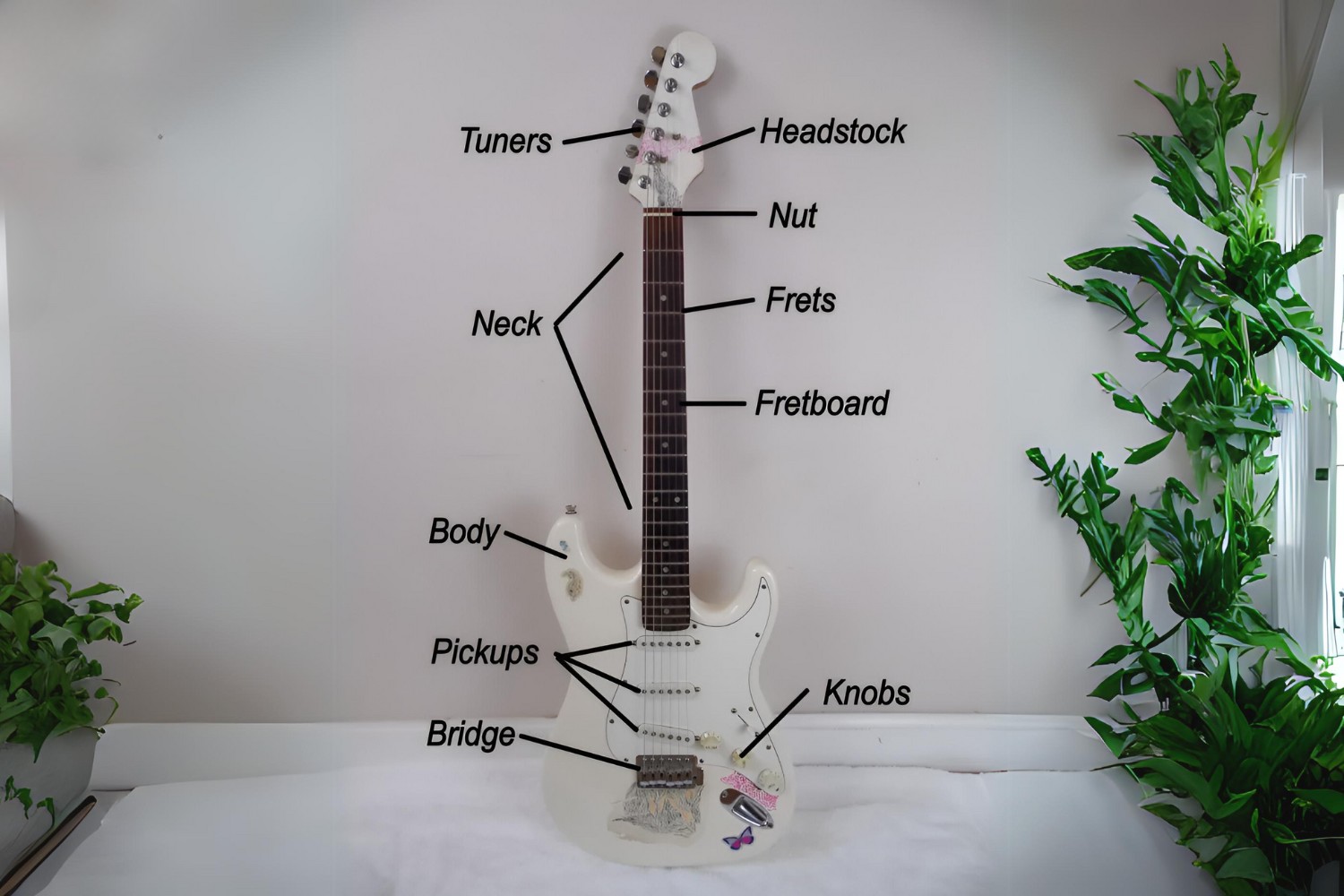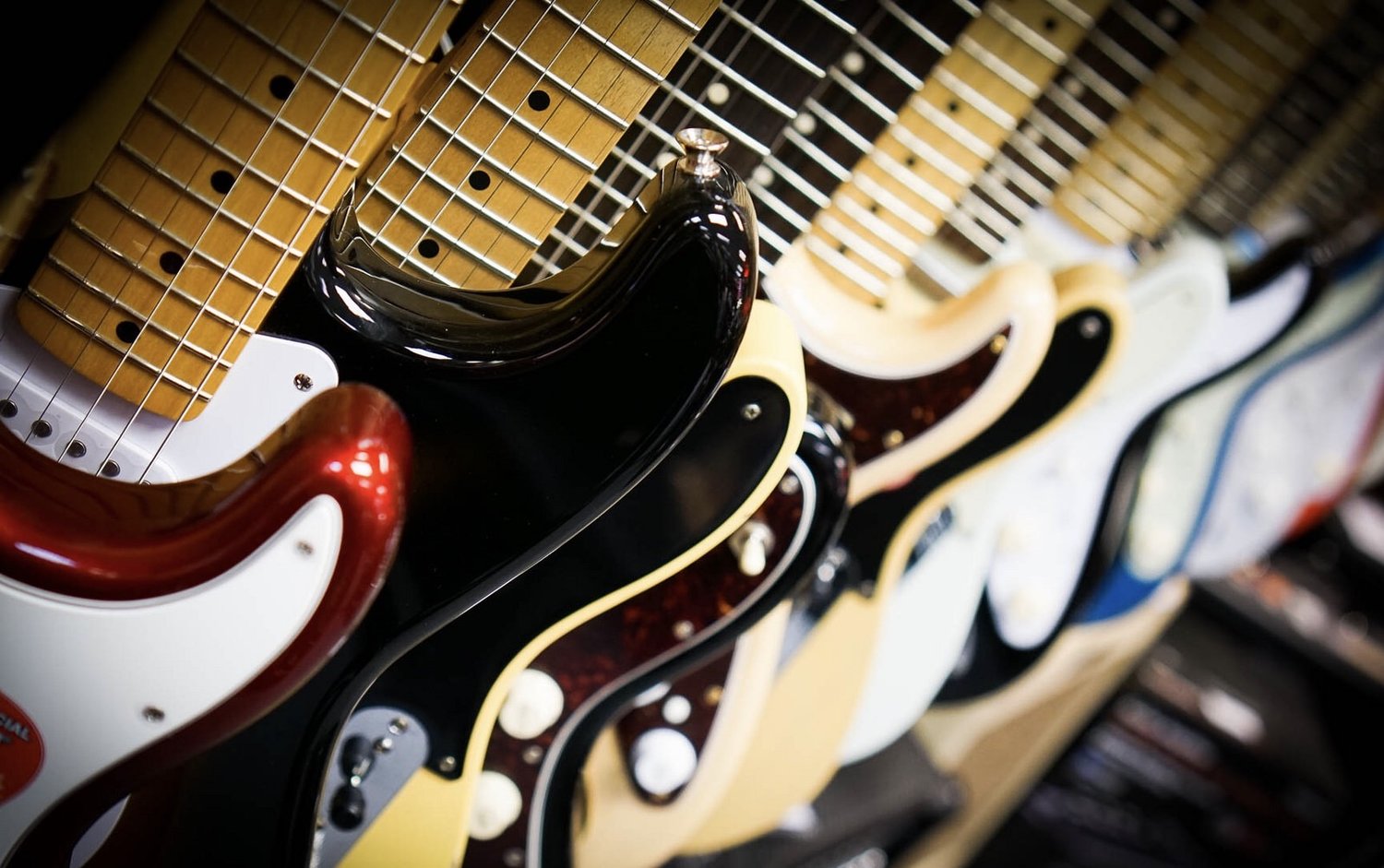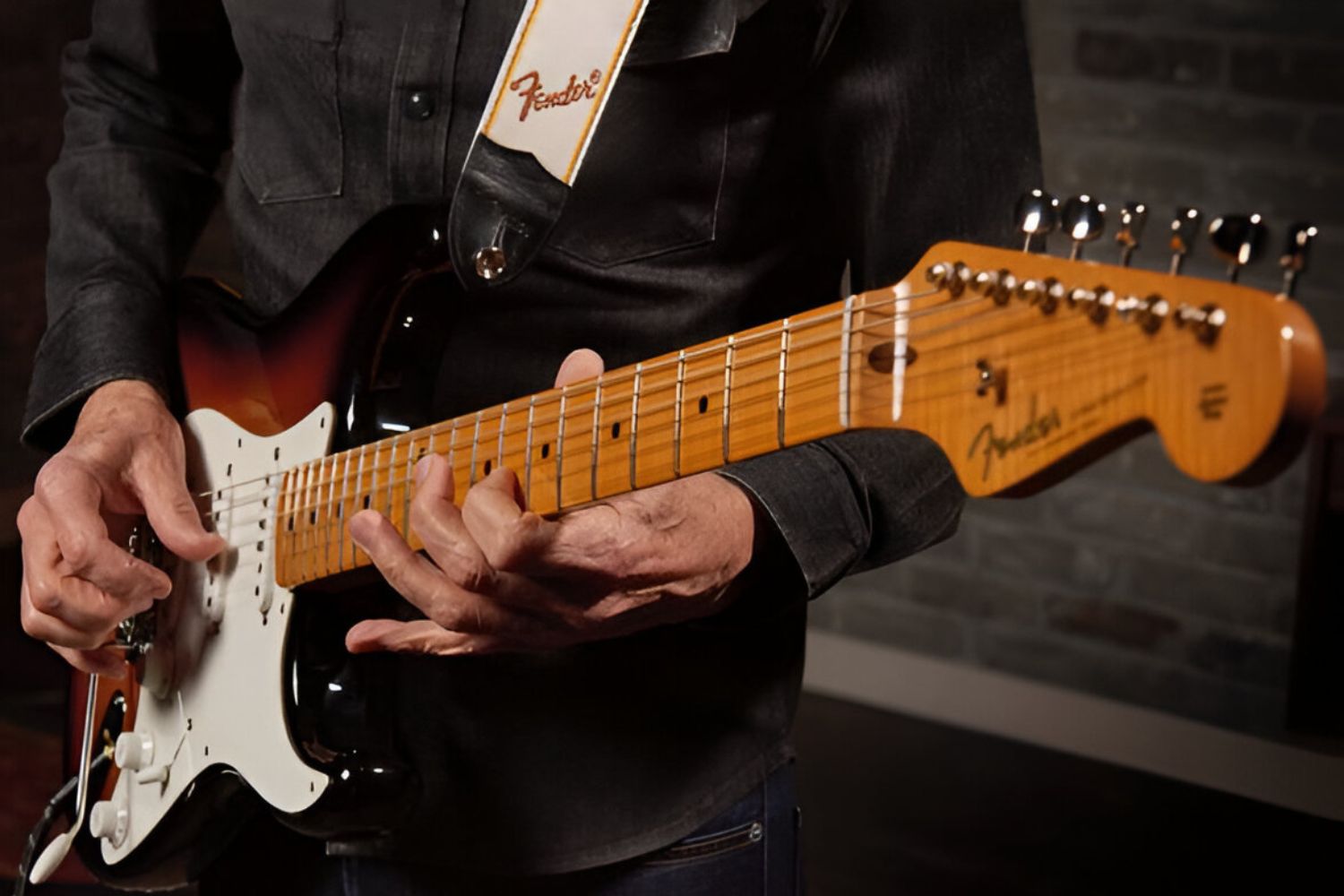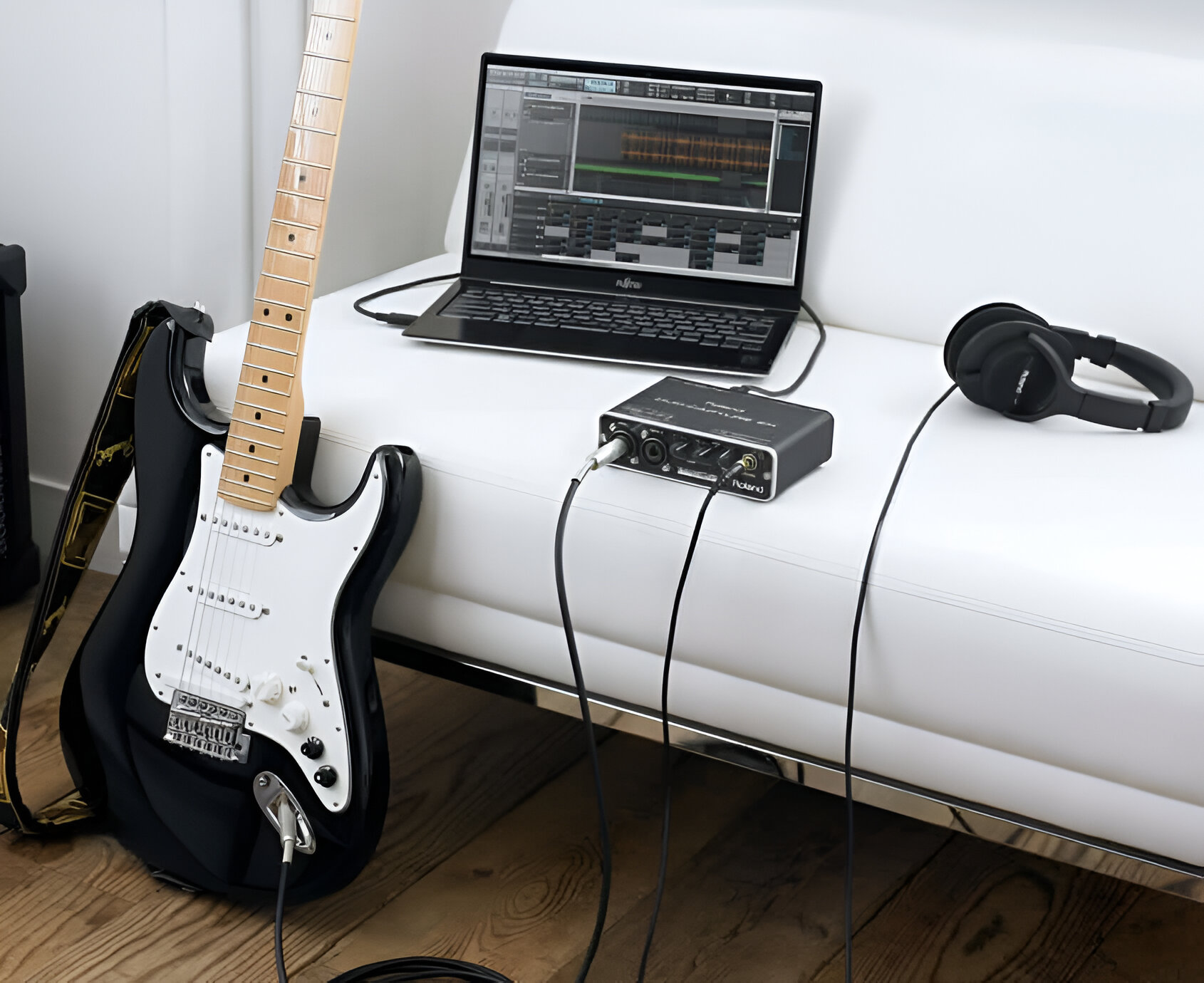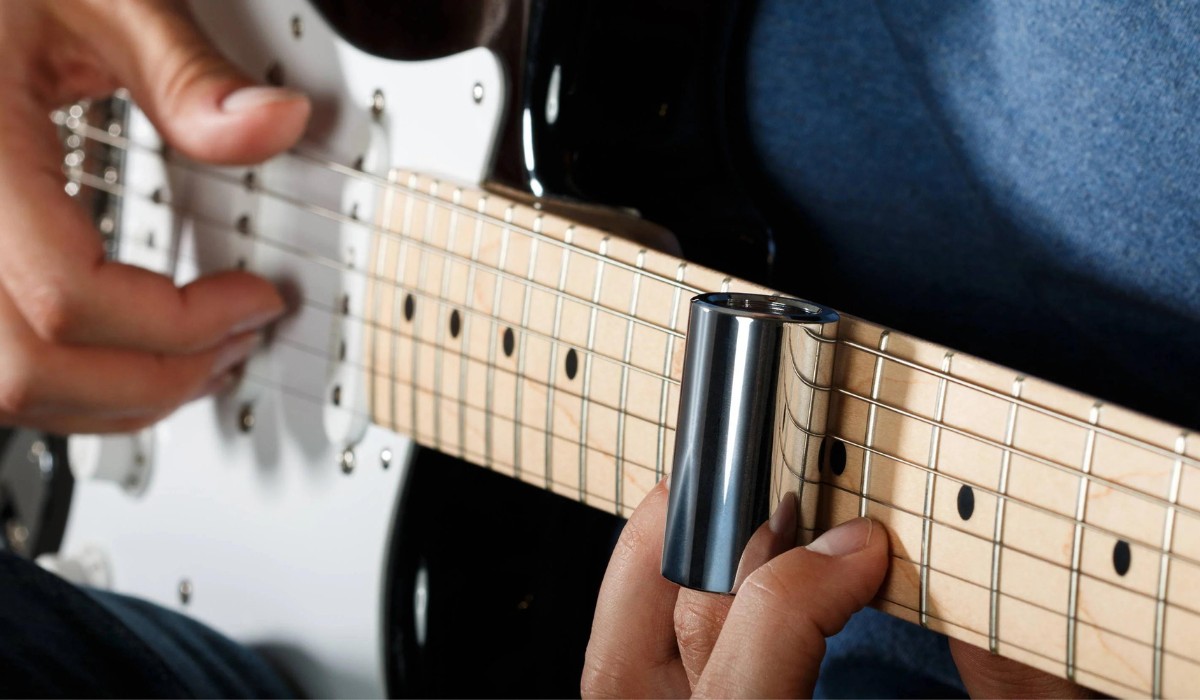Introduction
Electric guitars are fascinating instruments that have revolutionized the music industry and shaped the sound of countless genres. Understanding the various parts of an electric guitar is essential for players and enthusiasts alike. Each component contributes to the instrument's unique tone, playability, and aesthetic appeal. From the body and neck to the pickups and electronics, every part plays a crucial role in defining the instrument's sound and character.
Exploring the anatomy of an electric guitar provides valuable insights into how these instruments produce their signature sounds. Whether you're a seasoned guitarist, a budding enthusiast, or simply curious about the mechanics behind these iconic instruments, delving into the intricacies of electric guitar construction can be both enlightening and enriching.
In this article, we will take a comprehensive look at the various components that comprise an electric guitar. By examining the body, neck, headstock, tuning pegs, nut, fretboard, frets, pickups, bridge, saddle, and electronics, we will gain a deeper understanding of how each part contributes to the instrument's overall functionality and sonic characteristics. Whether you're a musician looking to expand your knowledge or a curious individual seeking to demystify the inner workings of electric guitars, this exploration will shed light on the fascinating world of electric guitar construction.
The Body
The body of an electric guitar serves as the foundation for its sonic and visual identity. Typically crafted from solid wood, the body plays a pivotal role in shaping the instrument's tonal characteristics. Different body shapes, such as the iconic Stratocaster, Telecaster, Les Paul, and SG designs, contribute to distinct sound profiles and ergonomic experiences for the player.
Additionally, the body houses the guitar's pickups, bridge, and controls, providing a platform for these essential components to interact harmoniously. The materials used in the construction of the body, such as mahogany, alder, ash, or maple, significantly impact the instrument's resonance, sustain, and overall tonal properties. Furthermore, the body’s contours and finishes not only contribute to the guitar’s aesthetic appeal but also influence its comfort and playability.
Moreover, the body’s weight and balance can affect the instrument’s overall feel and suitability for different playing styles. Whether it’s the sleek curves of a Stratocaster or the robust solidity of a Les Paul, the body of an electric guitar is a defining element that influences both its sound and the player’s connection to the instrument.
The Neck
The neck of an electric guitar is a vital component that directly influences playability, tone, and overall performance. Typically crafted from durable and resonant woods such as maple, mahogany, or rosewood, the neck provides a stable platform for the fretboard and frets while contributing to the instrument’s tonal characteristics. The shape and profile of the neck, such as C, V, U, or D profiles, greatly impact the player’s comfort and grip, catering to a wide range of playing styles and preferences.
Furthermore, the neck’s construction often includes an adjustable truss rod, which allows players to fine-tune the instrument’s neck relief, ensuring optimal playability and minimizing the risk of structural issues caused by string tension. The fretboard, typically affixed to the neck, provides a smooth surface for fretting notes and chords, with materials like rosewood, ebony, or maple influencing the instrument’s tonal response and feel under the fingers.
Additionally, the frets, small metal bars embedded into the fretboard, determine the guitar’s intonation and facilitate precise note placement, essential for accurate playing and chord voicings. The neck also houses the guitar’s headstock, which accommodates the tuning pegs and imparts a distinctive visual identity to the instrument.
Ultimately, the neck of an electric guitar is not only a structural component but also a crucial contributor to the instrument’s playability, tone, and overall feel. Its design, materials, and craftsmanship play a significant role in shaping the player’s connection to the instrument and the sonic characteristics it produces.
The Headstock
The headstock of an electric guitar is a distinctive and functional element that plays a crucial role in tuning stability, string tension, and overall aesthetic appeal. Serving as the endpoint of the guitar’s neck, the headstock accommodates the tuning pegs, which enable players to adjust the tension of the strings, thereby determining the instrument’s pitch and tuning accuracy.
Moreover, the design of the headstock contributes to the instrument’s visual identity, with various shapes and configurations reflecting the manufacturer’s branding and design ethos. Whether it’s the iconic Fender “spaghetti” headstock or the instantly recognizable Gibson “open book” design, the headstock serves as a hallmark of the guitar’s heritage and brand recognition.
From a functional standpoint, the angle of the headstock can impact the strings’ downward pressure on the nut, affecting sustain, resonance, and tuning stability. Additionally, the headstock often features the guitar’s logo, further enhancing its visual appeal and establishing a connection to the instrument’s lineage and legacy.
Furthermore, the headstock’s construction, often matching the neck’s wood and finish, contributes to the instrument’s overall balance and aesthetic coherence. Whether it’s a traditional 3×3 or 6-inline configuration, the headstock’s layout and arrangement of tuning pegs play a pivotal role in facilitating smooth and reliable tuning adjustments.
In essence, the headstock of an electric guitar is far more than a structural component—it embodies the instrument’s heritage, functionality, and visual allure. Its design, construction, and role in maintaining tuning stability make it an integral part of the guitar’s overall identity and performance.
The Tuning Pegs
The tuning pegs, also known as machine heads or tuners, are essential components of an electric guitar, playing a critical role in determining the instrument’s tuning stability, string tension, and overall playability. These small, yet crucial, mechanisms allow players to adjust the tension of the strings, thereby controlling the pitch of each string and ensuring accurate tuning.
Typically located on the headstock, the tuning pegs are designed to securely anchor the strings while facilitating precise adjustments to achieve the desired pitch for each string. The gear ratio of the tuning pegs influences the sensitivity of tuning adjustments, with higher gear ratios allowing for finer tuning control, particularly beneficial for achieving accurate intonation and stable tuning across the fretboard.
Furthermore, the material and construction of the tuning pegs can impact the overall weight distribution of the headstock, influencing the instrument’s balance and playability. Additionally, the aesthetics of the tuning pegs, whether they feature traditional vintage-style or modern locking mechanisms, contribute to the guitar’s visual appeal and complement its overall design.
Moreover, advancements in tuning peg technology have led to the development of locking tuners, which provide enhanced tuning stability by securely clamping the strings in place, minimizing slippage and improving overall performance, especially during aggressive playing or heavy string bending.
In summary, the tuning pegs of an electric guitar are integral to the instrument’s tuning accuracy, stability, and overall functionality. Their design, construction, and precision engineering are crucial factors in ensuring that the guitar remains in tune, facilitating a seamless playing experience for musicians across diverse genres and styles.
The Nut
The nut of an electric guitar is a small yet indispensable component that plays a crucial role in maintaining string spacing, facilitating smooth string movement, and ensuring accurate intonation. Typically crafted from materials such as bone, synthetic materials, or metal, the nut is positioned at the junction of the headstock and the fretboard, guiding the strings to their respective tuning pegs while defining their spacing and height above the fretboard.
One of the nut’s primary functions is to establish the correct string height, or action, at the first fret, a critical factor in determining the instrument’s playability and intonation. Additionally, the nut’s slots are meticulously cut to accommodate the strings, allowing them to move freely while preventing lateral movement that could lead to tuning instability and inconsistent string spacing.
Furthermore, the material and craftsmanship of the nut significantly impact the guitar’s tone and sustain. A well-cut and properly lubricated nut ensures that the strings vibrate freely, transmitting energy to the instrument’s body and contributing to its overall resonance and tonal characteristics.
Moreover, advancements in nut design have led to the development of self-lubricating materials and locking nuts, which enhance tuning stability and minimize string binding, particularly beneficial for guitars equipped with vibrato systems or subjected to aggressive playing techniques.
In essence, the nut of an electric guitar is a fundamental component that directly influences the instrument’s playability, tuning stability, and tonal properties. Its precise construction, material selection, and meticulous setup are essential factors in ensuring that the guitar performs optimally, providing musicians with a reliable and expressive tool for their artistic endeavors.
The Fretboard
The fretboard, also known as the fingerboard, is a crucial component of an electric guitar, serving as the playing surface for fretting notes, chords, and melodies. Typically crafted from durable and resonant woods such as rosewood, ebony, or maple, the fretboard’s construction and design significantly impact the instrument’s playability, tonal response, and overall aesthetic appeal.
One of the fretboard’s essential functions is to provide a smooth and responsive surface for the player’s fingers, facilitating precise and comfortable fretting of notes and chords. The choice of wood for the fretboard not only affects the instrument’s tonal characteristics but also influences the tactile experience for the player, with different woods offering varying degrees of warmth, brightness, and sustain.
Additionally, the fretboard’s radius, or curvature, plays a crucial role in determining the instrument’s string action and facilitating comfortable string bending and vibrato techniques. Whether it’s a vintage-style 7.25″ radius or a modern compound radius design, the fretboard’s curvature directly impacts the guitar’s playability and responsiveness.
Furthermore, the fretboard’s inlays, often crafted from materials such as mother-of-pearl or acrylic, serve as visual markers for fret positions, aiding players in navigating the fretboard with precision and confidence. These inlays also contribute to the instrument’s aesthetic appeal, adding a touch of elegance and individuality to its overall design.
Moreover, advancements in fretboard design have led to the development of stainless steel and composite materials, offering enhanced durability, resistance to wear, and consistent playability over extended use, particularly beneficial for heavy-handed players and touring musicians.
In summary, the fretboard of an electric guitar is far more than a mere surface for fretting notes—it is a dynamic and integral component that shapes the instrument’s playability, tonal characteristics, and visual identity. Its construction, wood selection, radius, and inlay design are essential factors in creating an instrument that not only sounds exceptional but also inspires players to explore its sonic capabilities with confidence and creativity.
The Frets
The frets of an electric guitar are integral to the instrument’s playability, intonation, and overall sonic precision. These small metal bars, embedded into the fretboard at specific intervals, serve as the primary points of contact for defining individual notes and chords. The placement and condition of the frets directly impact the instrument’s intonation, allowing players to achieve accurate pitch across the fretboard.
One of the crucial functions of the frets is to establish precise divisions of the fretboard, enabling musicians to produce distinct pitches and harmonies with accuracy. Properly installed and maintained frets ensure that each note rings true and clear, facilitating expressive playing and tonal consistency across the instrument’s entire range.
Furthermore, the condition of the frets significantly influences the instrument’s playability, with well-dressed and polished frets contributing to a smooth and responsive playing experience. Over time, fret wear and leveling issues can impact the guitar’s intonation and string action, necessitating fret maintenance and, in some cases, fret replacement to restore optimal playability.
Moreover, advancements in fret material and construction have led to the development of stainless steel and alloy frets, offering enhanced durability, resistance to wear, and a slick playing surface, particularly beneficial for players who demand reliability and longevity from their instruments.
Additionally, the fret ends, where the fretboard meets the sides of the neck, are often rounded and dressed to provide a comfortable and seamless playing experience, ensuring that the player’s hands move effortlessly along the neck without encountering sharp edges or protrusions.
In essence, the frets of an electric guitar are not only fundamental to the instrument’s intonation and playability but also contribute to its tactile and sonic characteristics. Their precise installation, condition, and material selection are essential factors in ensuring that the guitar remains responsive, expressive, and reliable for the player’s artistic endeavors.
The Pickups
Pickups are essential components of an electric guitar, responsible for capturing the vibrations of the strings and converting them into electrical signals that can be amplified and shaped into the instrument’s distinctive sound. Typically mounted beneath the strings and embedded in the body of the guitar, pickups come in various designs, including single-coil, humbucker, and P-90 configurations, each offering unique tonal characteristics and sonic capabilities.
Single-coil pickups, known for their bright, clear, and articulate sound, are revered for their ability to deliver crisp and detailed tones, making them popular in genres such as blues, rock, and country. Conversely, humbuckers, characterized by their warm, fat, and noise-resistant output, are prized for their ability to produce rich, thick tones with enhanced sustain and reduced susceptibility to electrical interference.
Furthermore, the placement of pickups, such as the bridge, middle, and neck positions, significantly influences the instrument’s tonal versatility and sonic palette. By blending the outputs from different pickup configurations, players can achieve a wide array of tonal textures and timbres, expanding the guitar’s sonic capabilities and expressive potential.
Moreover, advancements in pickup technology have led to the development of noiseless, active, and coil-tapped pickups, offering enhanced noise reduction, extended frequency response, and versatile tonal options, catering to the diverse needs and preferences of modern guitarists across various musical genres.
Additionally, pickup construction and materials play a crucial role in shaping the instrument’s tonal characteristics, with variations in magnet types, wire gauge, and coil winding techniques contributing to the pickup’s sonic signature and responsiveness to playing dynamics.
In summary, pickups are not only the heart of an electric guitar’s tonal identity but also the conduit through which the instrument expresses its sonic nuances and artistic potential. Their design, configuration, and technological innovations are essential factors in shaping the guitar’s voice and empowering musicians to explore a rich tapestry of tones and textures in their musical pursuits.
The Bridge
The bridge of an electric guitar is a critical component that anchors the strings, sets their intonation, and transmits their vibrations to the guitar’s body, influencing the instrument’s sustain, resonance, and tonal characteristics. Whether it’s a fixed bridge, a tremolo system, or a tune-o-matic design, the bridge plays a pivotal role in shaping the guitar’s playability, tuning stability, and sonic expressiveness.
One of the primary functions of the bridge is to establish the string’s break angle and provide a secure anchor point, facilitating optimal transfer of string vibrations to the guitar’s body. This interaction contributes to the instrument’s sustain, responsiveness, and overall tonal richness, making the bridge a crucial factor in shaping the guitar’s sonic identity.
Furthermore, the bridge’s design directly impacts the instrument’s intonation, allowing players to achieve accurate pitch across the fretboard. Adjustable saddles, often featured in modern bridge designs, enable precise fine-tuning of each string’s length, ensuring that the instrument produces harmonically accurate notes and chords.
Moreover, the material and construction of the bridge significantly influence the guitar’s tonal characteristics, with variations in materials such as steel, aluminum, or titanium offering distinct sonic properties, durability, and sustain. Additionally, the bridge’s mass and contact points with the guitar’s body contribute to its resonance and acoustic coupling, influencing the instrument’s overall tonal response and dynamic range.
Advancements in bridge technology have led to the development of locking tremolo systems, piezo-equipped bridges, and innovative tailpiece designs, offering enhanced tuning stability, extended tonal capabilities, and versatile playing options, catering to the diverse needs and creative aspirations of modern guitarists.
In essence, the bridge of an electric guitar is far more than a mere string anchor—it is a dynamic and integral component that shapes the instrument’s playability, tonal characteristics, and sonic expressiveness. Its design, construction, and technological innovations are essential factors in creating an instrument that not only sounds exceptional but also inspires players to explore its sonic capabilities with confidence and creativity.
The Saddle
The saddle of an electric guitar is a small yet crucial component that directly influences the instrument’s intonation, string action, and overall playability. Typically positioned in the bridge assembly, the saddle serves as the contact point for the strings, determining their length and providing a means for precise adjustment to achieve accurate pitch and optimal string height.
One of the primary functions of the saddle is to establish the correct scale length for each string, ensuring that the instrument produces harmonically accurate notes and chords across the fretboard. By allowing individual string length adjustments, the saddle plays a pivotal role in addressing intonation discrepancies that may arise due to variations in string gauge, tension, or playing style.
Furthermore, the material and construction of the saddle significantly impact the guitar’s tonal characteristics, sustain, and string vibration transfer to the instrument’s body. Variations in saddle materials, such as brass, steel, titanium, or synthetic compounds, offer distinct sonic properties, durability, and acoustic coupling, contributing to the instrument’s overall tonal response and resonance.
Moreover, the shape and contour of the saddle can influence the instrument’s string action, providing a means for fine-tuning the playability and responsiveness of the guitar. By adjusting the saddle height and radius, players can tailor the instrument’s setup to their preferences, ensuring a comfortable and expressive playing experience.
Advancements in saddle design have led to the development of compensated and adjustable saddles, offering enhanced intonation accuracy, particularly beneficial for achieving precise tuning and harmonic consistency across the fretboard. Additionally, innovations in saddle technology have addressed issues related to string slippage, wear, and string breakage, providing reliable and stable string anchoring for the player’s creative pursuits.
In summary, the saddle of an electric guitar is a fundamental component that not only addresses intonation and string action but also contributes to the instrument’s tonal characteristics and playability. Its precise construction, material selection, and adjustable features are essential factors in ensuring that the guitar remains responsive, expressive, and reliable for the player’s artistic endeavors.
The Electronics
The electronics of an electric guitar encompass a diverse range of components that collectively shape the instrument’s tonal versatility, sonic characteristics, and expressive potential. From pickups and potentiometers to switches and capacitors, the electronic circuitry of an electric guitar plays a pivotal role in sculpting its sonic identity and providing musicians with a wide array of tonal options.
Central to the guitar’s electronic system are the pickups, which serve as the primary transducers, converting string vibrations into electrical signals. The output from these pickups is then directed through a network of potentiometers, or “pots,” which control the volume and tone of the instrument. By adjusting the resistance within the circuit, players can manipulate the guitar’s output, shaping its timbre and sonic characteristics.
Furthermore, the selection of capacitors in the guitar’s circuitry can significantly impact the instrument’s tone shaping capabilities, particularly in the context of tone controls. Different capacitor values influence the roll-off frequencies and tonal response, allowing players to fine-tune the guitar’s high-end presence and overall tonal balance.
Additionally, the inclusion of switches, such as pickup selectors and coil-splitting mechanisms, expands the guitar’s sonic palette, offering diverse pickup configurations and tonal options. These switches provide musicians with the flexibility to blend different pickup combinations, activate single-coil or humbucking modes, and explore a wide range of tonal textures and timbres.
Moreover, advancements in electronic design have led to the development of active pickup systems, onboard preamps, and EQ controls, offering extended tonal shaping capabilities, increased output levels, and noise reduction, catering to the diverse needs and sonic aspirations of modern guitarists across various musical genres.
In essence, the electronics of an electric guitar are not only the conduit through which the instrument’s sonic nuances are shaped but also the gateway to a rich tapestry of tonal possibilities. Their design, configuration, and technological innovations are essential factors in creating an instrument that not only sounds exceptional but also empowers musicians to explore a vast sonic landscape with creativity and confidence.
The Output Jack
The output jack of an electric guitar is a small yet essential component that serves as the gateway for transmitting the instrument’s electrical signals to external amplification and signal processing devices. Positioned on the guitar’s body, the output jack provides a secure and reliable connection point for the instrument cable, ensuring that the guitar’s signal is efficiently routed to external audio equipment.
One of the primary functions of the output jack is to establish a stable electrical connection between the guitar and the amplifier or signal processing unit. The secure insertion of the instrument cable into the output jack ensures that the electrical signal is transmitted without interference, maintaining signal integrity and reliability during performance and recording situations.
Furthermore, the construction and durability of the output jack significantly impact the instrument’s overall reliability and performance. High-quality output jacks with robust construction and reliable contact points minimize the risk of signal loss, crackling, or intermittent connections, providing musicians with consistent and dependable signal transfer.
Moreover, the design of the output jack can influence the instrument’s aesthetic appeal and user experience. Whether it’s a traditional barrel-style jack or a modern locking mechanism, the output jack’s design and functionality contribute to the overall ergonomics and user-friendliness of the instrument, ensuring a hassle-free and efficient connection process for the player.
Advancements in output jack technology have led to the development of stereo, balanced, and high-definition connectivity options, offering extended versatility and compatibility with a wide range of audio equipment and signal processing devices. These innovations provide musicians with enhanced connectivity and signal routing capabilities, catering to the diverse needs and creative aspirations of modern guitarists across various musical genres.
In summary, the output jack of an electric guitar is far more than a mere connection point—it is a critical component that ensures reliable signal transfer and connectivity, contributing to the instrument’s overall performance and user experience. Its construction, reliability, and technological innovations are essential factors in creating an instrument that not only sounds exceptional but also provides musicians with seamless and dependable signal routing for their artistic endeavors.
Conclusion
Exploring the various components of an electric guitar unveils a rich tapestry of craftsmanship, innovation, and sonic potential. From the body and neck to the pickups, electronics, and hardware, each component plays a pivotal role in shaping the instrument’s tonal characteristics, playability, and visual identity. The intricate interplay between these components forms the foundation of the electric guitar’s sonic versatility and expressive potential, empowering musicians to craft a diverse range of tones and textures.
Furthermore, the evolution of electric guitar construction and design has led to a myriad of technological advancements, offering extended tonal shaping capabilities, enhanced playability, and improved reliability. From innovative pickup configurations and electronic circuitry to ergonomic hardware and connectivity options, modern electric guitars continue to push the boundaries of sonic exploration and artistic expression.
Ultimately, the anatomy of an electric guitar serves as a testament to the ingenuity and artistry of luthiers, engineers, and musicians who have collectively shaped the instrument’s evolution. With its ability to adapt to diverse playing styles, genres, and sonic landscapes, the electric guitar remains a timeless and iconic instrument, inspiring countless musicians to push the boundaries of creativity and musical innovation.
As players continue to explore the sonic capabilities of electric guitars, the symbiotic relationship between craftsmanship, technology, and artistic expression will undoubtedly propel the instrument into new frontiers of sonic exploration and creative inspiration. Whether in the hands of a seasoned virtuoso or a budding enthusiast, the electric guitar’s enduring legacy and sonic versatility continue to captivate and inspire musicians across the globe.







